Delayed onset muscle soreness (DOMS) is regularly treated through massage. DOMS is the microscopic tears of muscle fibres and build-up of metabolic wastes within muscles. DOMS can occur at any point between 24 and 72 hours after activity. There are a wide range of causes for DOMS, the most common include muscle overuse, insufficient warm up/cool down and muscle strains and pulls. DOMS can often reduce activity, restrict movement, increase pain and reduce relaxation. Our massage therapists at Physio.co.uk use massage for DOMS to help a person return to sport or exercise, relieve stress and decrease pain.
What type of massage is used for delayed onset muscle soreness?
A wide range of massage types can be used for DOMS. The most used massage types include:
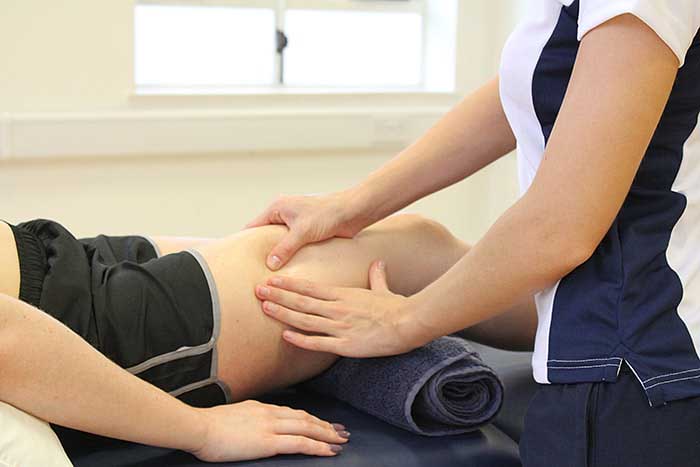
When can a massage help delayed onset muscle soreness?
A massage can help DOMS in many ways. Ways in which a massage can help include:
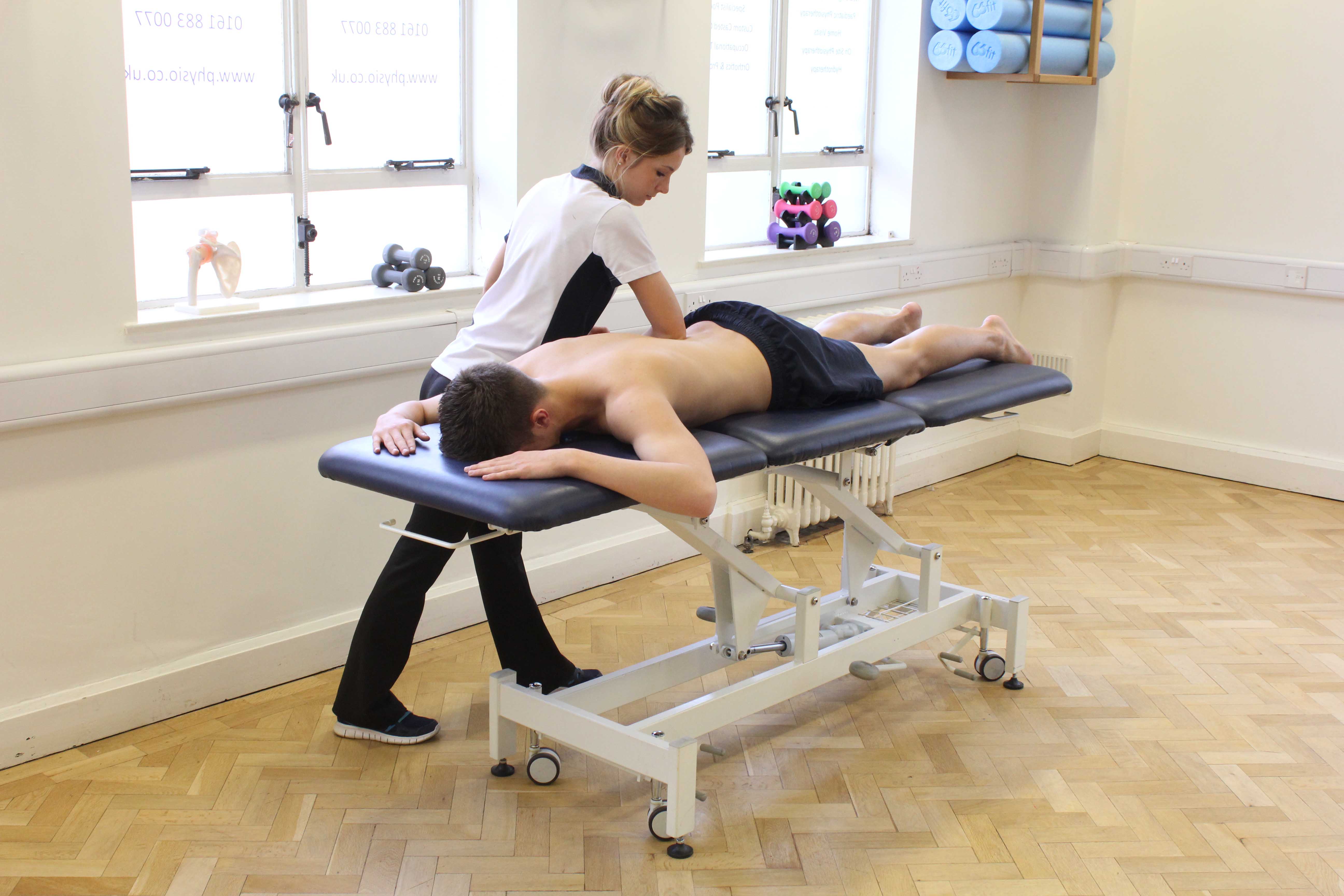 Above: Deep tissue massage of lower latissimus and lumber region to address delayed onset muscle soreness
Above: Deep tissue massage of lower latissimus and lumber region to address delayed onset muscle sorenessA massage for DOMS can decrease pain. Pain is increased when DOMS occurs. Pain is increased by damaged muscle fibres and a buildup of waste products causing muscular fatigue and ache. A massage aims to reduce pain by improving blood flow. The blood flow contains oxygen and nutrients that are a useful source of energy for muscles and are also essential for the repair of damaged muscle fibres. Improving blood flow causes healing to increase due to the increase in oxygen and nutrient availability. Muscular fatigue and ache are also reduced when blood flow is improved as oxygen and nutrients are used to increase muscular energy and increase muscle strength.
Reducing DOMS through massage can help post event. After an event, DOMS occurs due to overworking a muscle and the buildup of metabolic wastes such as lactic acid. DOMS that arise post event can increase pain, prevent a person from returning to training quickly or increase chances of injury if a person does return to training. Reducing DOMS post event can help decrease pain, repair damaged muscle fibres helping to reduce chances of injury and help a person return to training more quickly. A massage increase blood and lymph flow. Increasing blood flow aids in the repair of damaged muscle fibres as well as reducing muscular fatigue. Increasing lymph flow aids in the removal of metabolic wastes more efficiently from the body to further reduce muscular fatigue as well as reduce muscle weakness and pain. Increasing blood and lymph flow overall increases the strength and healthiness of muscles resulting in a decrease in pain and the ability to return to training with less risk of injury.
Relaxation can be increased through massage for DOMS. DOMS can cause an increase in pain and restriction in movement resulting in an increase in stress and reduced relaxation. As pain increases stress also increases. A stress hormone called cortisol is released in response to pain which can often further increase the pain level. Increasing pain level further reduces relaxation. A massage aims to relieve stress in order to decrease pain. A massage promotes the release of feel good hormones called serotonin, dopamine and endorphins. Feel good hormones increase relaxation and provide a sense of well-being. Increasing feel good hormones reduces stress therefore increasing relaxation. A massage also increase relaxation by reducing restricted movement. Movement is restricted due to the pain and an increase in muscular tension. A massage increases blood flow resulting in a rise in muscle temperature. A rise in muscle temperature allows muscle to relax, reducing tension and pain. Reducing tension and pain further increases relaxation.
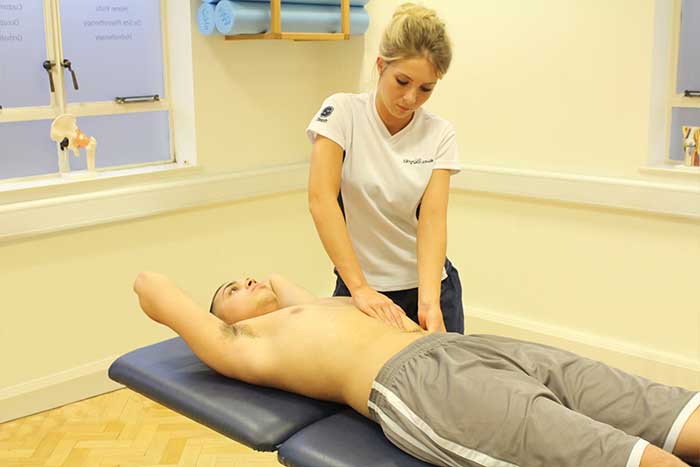
What are the physiological effects of receiving a massage for delayed onset muscle soreness?
There are many physiological effects of massage for DOMS. The physiological effects that most commonly occur include:
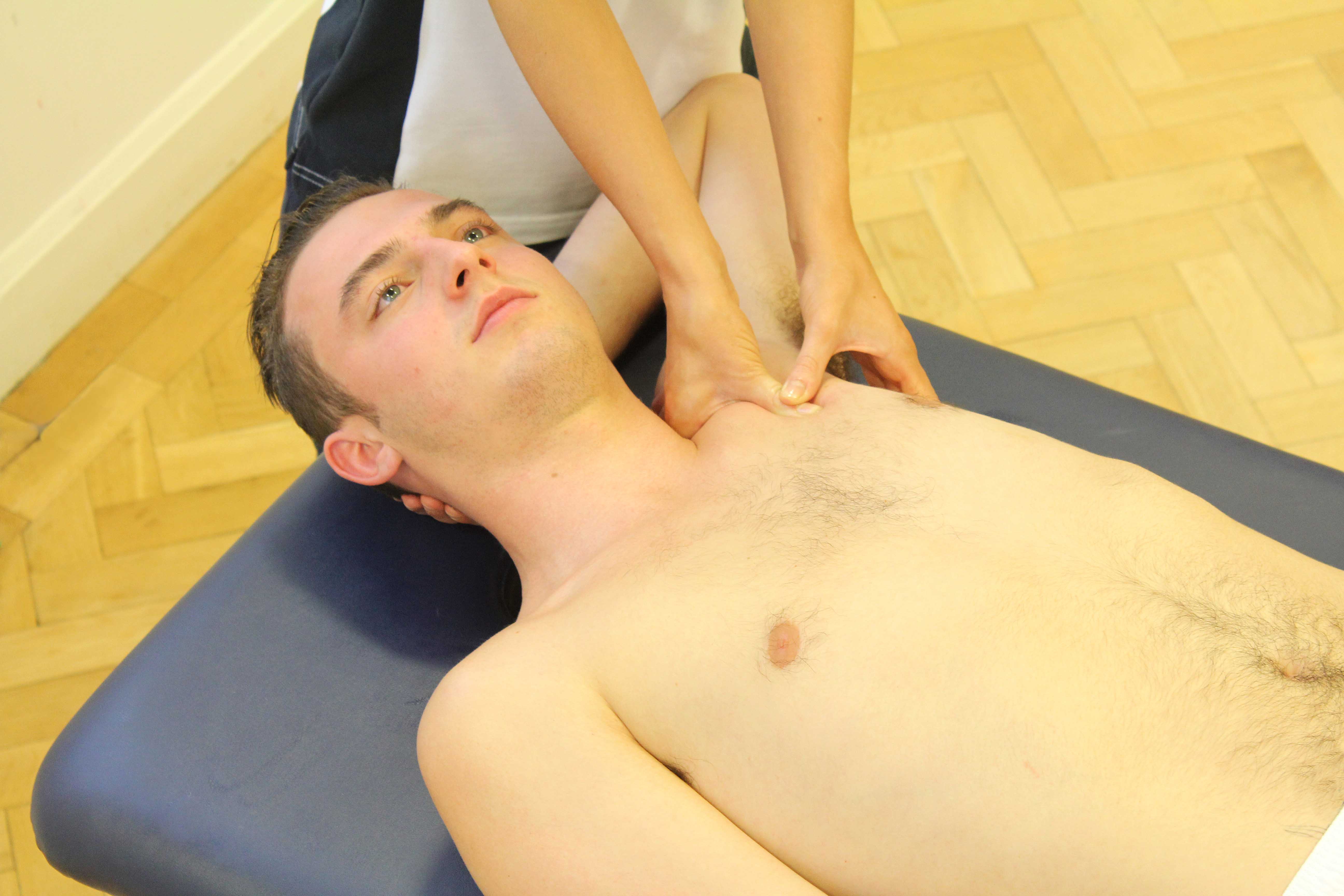 Above: Targeted massage of pectoralis major to address dealyed onset muscle soreness
Above: Targeted massage of pectoralis major to address dealyed onset muscle sorenessThe removal of waste products occurs during a massage for DOMS. The removal of waste products involves the stimulation of the lymphatic system to increase lymphatic flow. Waste products make up the lymph fluids that are carried within the lymph vessels. Waste products such as lactic acid are formed during intense exercise or activity which cause muscular ache, fatigue and weakness which can later result in formation of DOMS. Stimulation of the lymphatic system increases lymphatic flow and the rate at which the waste products are removed from the body. Increasing the rate of waste products being removed helps to reduce muscular ache, fatigue and weakness, therefore reducing DOMS.
A physiological effect of massage is increased lymphatic drainage. Lymphatic drainage is where an increase in removal of metabolic wastes occurs due to stimulation of the lymphatic system. The lymphatic system is made up of several lymph vessels that carry and transport lymph fluids containing the metabolic wastes. Lymphatic drainage encourages the excess fluids and build-up of metabolic wastes that cause an increase in pain, swelling and decreased healing to be removed from the body through glands and nodes. The most common locations glands can be found include behind the knee, in the groin area and in the armpit. Removing metabolic wastes through lymphatic drainage can help reduce pain, increase healing and decrease swelling, contributing to reduced DOMS.
An increase in oxygenation often occurs within a massage for DOMS. Increased oxygenation is where muscles and tissues are supplied with an increase in oxygen. Oxygenation increases as circulation is improved due to oxygen being transported around the body within the blood flow. Oxygen has many uses within the body, the most common include an energy source and for the maintenance of healthy muscles. A factor of DOMS is muscular fatigue. Muscular fatigue can increase pain and cause muscles to weaken resulting in an increased chance of injury. A massage helps to increase blood flow. Increasing blood flow results in the availability of oxygen also increasing. Increasing oxygen availability provides muscles with an increase in energy which is used to reduce muscular fatigue. Reducing muscular fatigue helps to decrease pain, increase muscle strength and decrease the possibility of injury therefore reducing DOMS.
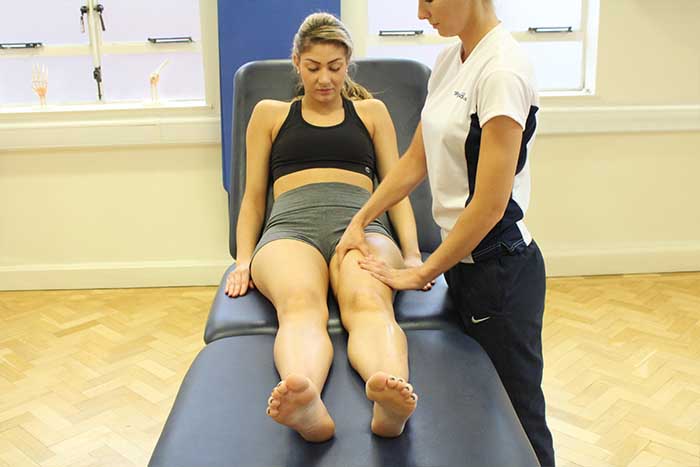
What are the benefits of receiving massage for delayed onset muscle soreness?
There are wide ranging benefits gained through massage for DOMS. The benefits most often gained include:
Flexibility is increased by massage for DOMS. DOMS can decrease flexibility as muscles tighten and pain increases restricting movement. Poor flexibility can often lead to muscle pulls or strains. A massage aims to reduce DOMS by relieving muscle tightness and pain. Muscle tightness is reduced due to a decrease in tissue in-elasticity. Reducing tissue in-elasticity allows muscles to relax and stretch to their full length. Allowing muscles to stretch to their full length helps to reduce restriction and pain as well as improve flexibility.
A benefit of massage for DOMS is the maintenance of healthy muscles. DOMS can involve a buildup of metabolic wastes. Metabolic wastes weaken muscles, increase pain, increase swelling and reduce a muscles overall health. Reducing DOMS can maintain healthy muscles by increasing the removal of metabolic wastes. A massage stimulates the lymphatic system which is responsible for removing waste products within the lymphatic flow. Increasing the removal of metabolic wastes reduces muscle weakness and pain and increases muscle health. A massage for DOMS also maintains healthy muscle by encouraging an increase in blood flow. The blood flow contains healthy oxygen and nutrients that help to repair damaged muscle fibres and increase muscle energy. Increasing the repair of damaged muscle fibres and providing an increase in energy further maintains healthy muscles.
Healing is increased through massage for DOMS. DOMS is most often caused by the microscopic tears of muscle fibres that occur as a result of muscle overuse or injury. Microscopic tears of muscle fibres increase pain and can also result in swelling. Healing of the torn muscle fibres is regularly poor when DOMS occurs due to the buildup of waste products that slow down the healing as well as the lack of blood circulation to the area. A massage to help decrease DOMS increases both blood and lymphatic circulation. Increasing blood circulation provides muscles with essential oxygen and nutrients needed for the repair of damaged muscle fibres. Increasing lymphatic circulation removes waste products more efficiently to allow the healing process to speed up. Increasing blood and lymphatic circulation through massage for DOMS therefore increases healing.
A massage for DOMS can decrease tension. Tension is caused when muscles stay contracted and do not relax. A buildup of tension increases pain and can often cause muscle spasms, otherwise known as muscle "cramps". Tension restricts movement due to the constant contraction and increases muscle tightness and the chances of injury. A massage to decrease DOMS reduces tension due to the encouragement of muscle relaxation. A massage increases muscle temperature due to an increase in blood flow. Tissue elasticity and flexibility increases as temperature rises, allowing muscle relaxation. Allowing muscle relaxation decreases tension.
Summary
Delayed onset muscle soreness (DOMS) occurs from 24-72 hours post activity and involves the microscopic tears and build-up of waste products within muscles. Various massage types can be used to treat DOMS including sports massage, deep tissue massage, remedial massage and Swedish massage. Treating DOMS through massage can help decrease pain, reduce negative effects of an event and increase relaxation. Many physiological effects including the removal of waste products, increased lymphatic drainage and increased oxygenation can occur during a massage for DOMS. There are wide ranging benefits of massage for DOMS including decreased tension, increased flexibility, the maintenance of healthy muscles and increased healing. Our massage therapists at Physio.co.uk use massage for DOMS to help increase relaxation and improve range of movement.
How can I arrange a massage to treat delayed onset muscle soreness?
The easiest way to arrange a massage to treat DOMS at Physio.co.uk is to email us at office@physio.co.uk or call us on 0800 033 7800.
You can also book an appointment online and save £10

 0330 088 7800
0330 088 7800


































